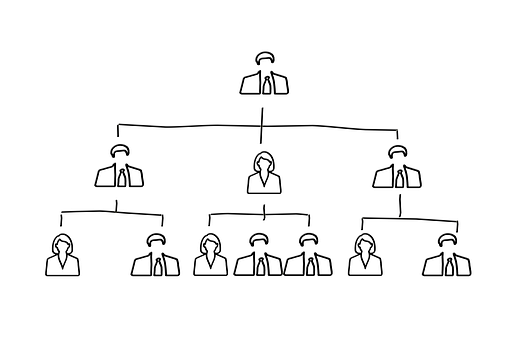



Most healthcare organizations today, including the National Health Service (NHS), operate under a hierarchical, pyramidal leadership model. This type of leadership is characterized by a “clearly defined chain of command that extends from the lower to the upper levels of an organization.”
Typically, larger organizations possess a hierarchical structure based on various levels of authority, forming a chain of command that interlinks multiple management tiers within the organization. Decisions are usually made in a formal, top-down manner.
The hierarchy within hospitals can differ by location, but it generally features a general manager and medical directors at the top, with medical assistants at the bottom.
Here’s an overview of the typical hospital hierarchy, starting from senior positions to lower-level roles:
This top-level official oversees the hospital’s administration, responsible for crafting and implementing policies that ensure patient safety and promote recovery. They also manage the hospital’s financial health regarding budgets and the operational viability of different departments.
Larger hospitals often have multiple medical directors, while smaller ones might only have one or two. These directors are tasked with formulating safe and effective healthcare policies and should always be aiming to uphold high standards of patient care. They oversee nearly all aspects of both inpatient and outpatient services, with some managing specific teams of specialists while others provide more general oversight. Every physician in the hospital reports to a medical director.
Department heads are specialized doctors leading fields such as orthopaedics, oncology, and pediatrics. In a hospital setting, they create and coordinate medical strategies, guiding attending physicians who follow their direction. Should an attending physician be unavailable due to emergencies, department heads may step in to assist.
Attending physicians are senior doctors responsible for overseeing patient treatment plans. They must possess a minimum of three years of residency experience, with many working in specialized areas.
Nurse practitioners typically interact with patients directly, providing urgent, primary, and specialized care to specific populations, including children, women, and the elderly. Their duties include documenting medical histories, collecting patient samples, ordering lab tests, and performing a variety of direct patient care tasks.
Pharmacists dispense prescription medications and guide patients in their safe use. They may also conduct health screenings, administer vaccines, and oversee medication management in the hospital.
Clinical nurse specialists can order tests, make diagnoses, provide basic treatments, and in certain states, prescribe medications within a hospital. They also offer expertise and support to the nursing staff.
Nurse technicians receive additional medical training beyond standard nursing, allowing them to undertake more technical tasks such as inserting catheters, removing stitches, and operating advanced monitoring equipment.
In a hospital, registered nurses (RNs) handle a broad array of responsibilities, including prepping patients for exams and treatments, administering medications, and educating patients and their families about care processes.
Medical assistants represent one of the entry-level positions in hospitals, engaged in various administrative tasks. They may schedule patient appointments, follow up on care, and assist with bookkeeping and billing, most of their work taking place at a desk.
The fundamental purpose of hierarchy is to help us navigate the complexities of the world, simplify information, and facilitate decision-making. Think of it evolutionarily: when someone declared, “Throw the spear now to take down the mammoth,” their leadership was vital.
A well-established hierarchy holds leaders accountable for outcomes and sets up mechanisms for replacing ineffective leaders, sometimes through promotions from within. This structure ultimately contributes to the success of the organization as a whole, encompassing owners, managers, and employees alike.
As employees ascend the hierarchical structure, their level of authority increases. Authority is essential whenever leadership is necessary, ensuring that those under a manager work collectively towards the organizational goals—or face potential consequences.